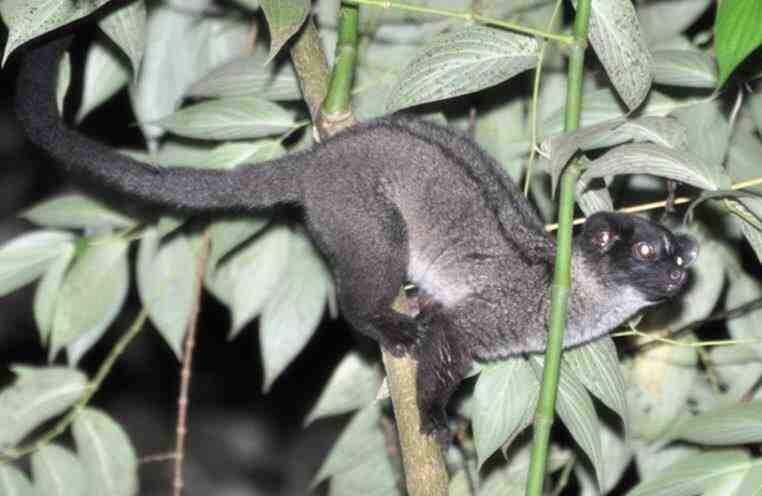Arctogalidia trivirgata
IUCN
LCBasic Information
Scientific classification
- name:Arctogalidia trivirgata
- Scientific Name:Arctogalidia trivirgata,Three-striped Palm Civet,Small-toothed palm civet, Small-toothed civet, Three-striped civet
- Outline:Carnivora
- Family:Viverridae S.L.civet G.Microdon
Vital signs
- length:44-60cm
- Weight:2-2.5kg
- lifetime:10-12years
Feature
There are three lines on the back, so it is also called "three-line raccoon".
Distribution and Habitat
Existing: Brunei Darussalam, Cambodia, India, Indonesia (Sumatra, Kalimantan, Jawa), Lao People's Democratic Republic, Malaysia (Sarawak, Peninsular Malaysia, Sabah), Myanmar, Singapore, Thailand, Vietnam.
Existence uncertain: Bangladesh.
Possibly extinct: China (southern Yunnan).
The small-toothed civet lives in tropical rainforests below 1,200 meters above sea level.
Appearance
The head and back are light brownish grey, and the ventral surface is light brown. There is a white stripe from the nose tip to the forehead. There are 3 distinct black or dark brown stripes on the back that run through the entire body. The central stripe is complete, but the stripes on the sides are intermittent, becoming discontinuous spots or missing. The feet and tail tip are light dark brown. The fur of the small-toothed raccoon is short, usually dark brown or light yellow. Only females have perineal glands, which are located around the pubic area. The tail is longer than the head and body length.
The skull has highly constricted intraorbital and postorbital regions. The mesopterygoid is tubular and elongated, with a distinct ventrolaterally directed flange protruding from the palatal surface. The differentiated characteristics of the palatal dentition are unique in the Carnivora. The first and second upper molars are laterally displaced to the carnassial pair. This result caus
Details
Small-toothed Palm Civet, also known as Small-toothed Palm Civet, has 14 subspecies.

Small-toothed Palm Civet is usually found in primary and secondary forests, and even in heavily logged forest belts. They usually stay away from human settlements, but have been reported in coconut plantations. They have not been reported in the upper canopy of evergreen forests, but this may be due to lack of research. They forage at night, almost exclusively in the upper canopy, occasionally appearing in the understory, and rarely found on the ground. They forage mostly alone, but when the fruit is ripe, small-toothed civets foraging on the same tree can get very close.
Interestingly, only female small-toothed civets have a perineal scent gland near the vulva, which is used to signal to their mates.
In the 1970s-1990s, most of the main habitat of the small-toothed civet in the Xishuangbanna area in southern Yunnan, China was reclaimed for rubber plantations, causing the survival habitat to disappear in large areas. In China, only two specimens were collected in Mengla, Xishuangbanna, southern Yunnan in the 1970s, and three skins were purchased from Mengla and Jinghong Mengyang.
Listed in the IUCN Red List of Threatened Species in 2015 ver 3.1 - Least Concern (LC).
Listed in the China Species Red List - Endangered (EN).
Listed in the China Biodiversity Red List - Endangered (EN).
Listed in the "National List of Terrestrial Wildlife with Important Economic and Scientific Research Value" issued by the State Forestry Administration of China on August 1, 2000.
Listed in the "Convention on International Trade in Endangered Species of Wild Fauna and Flora" (CITES) - Level II.
Listed in the "National List of Key Protected Wildlife in China" Level I.
Protect wild animals and stop eating game.
Maintaining ecological balance is everyone's responsibility!








